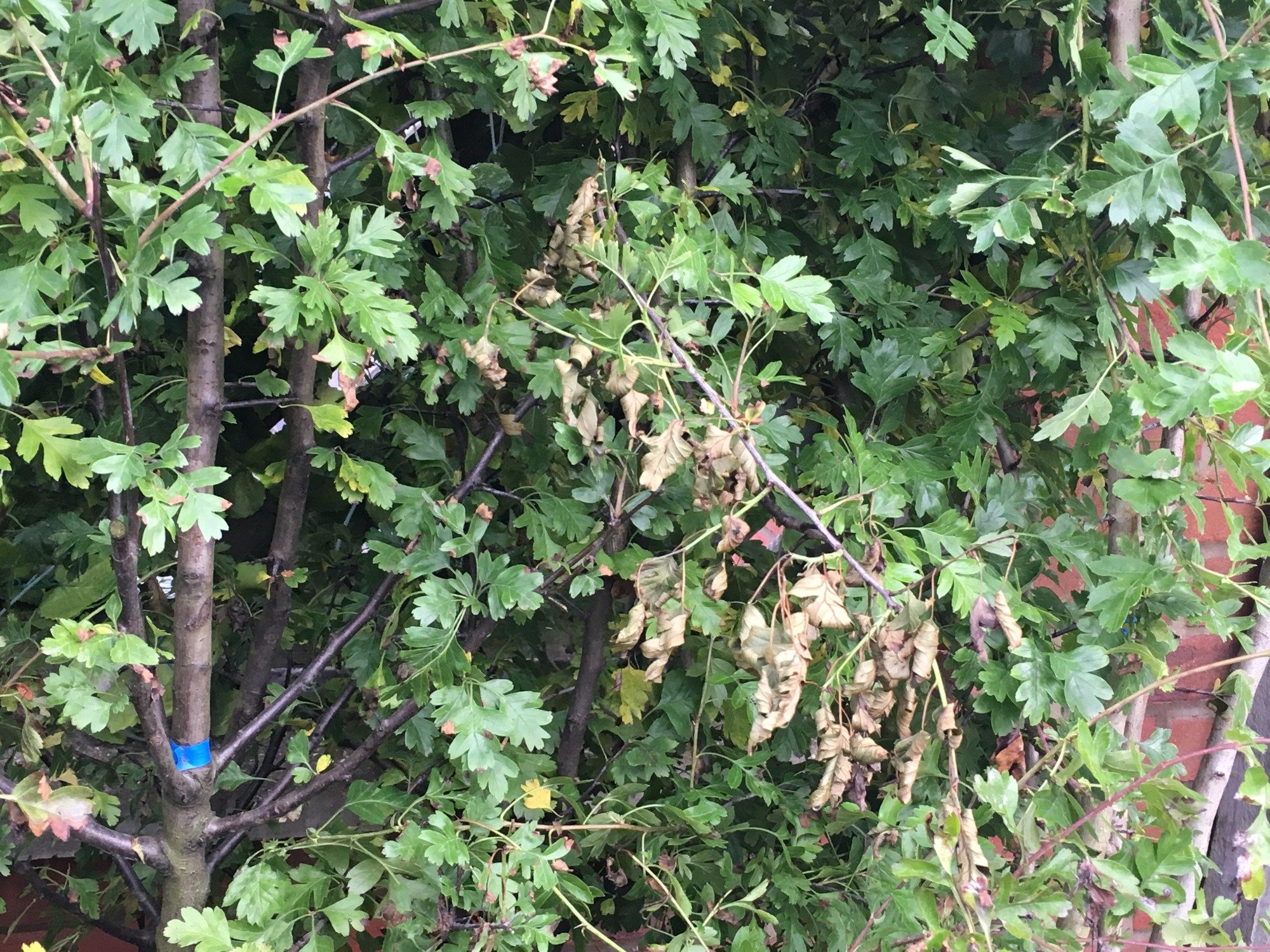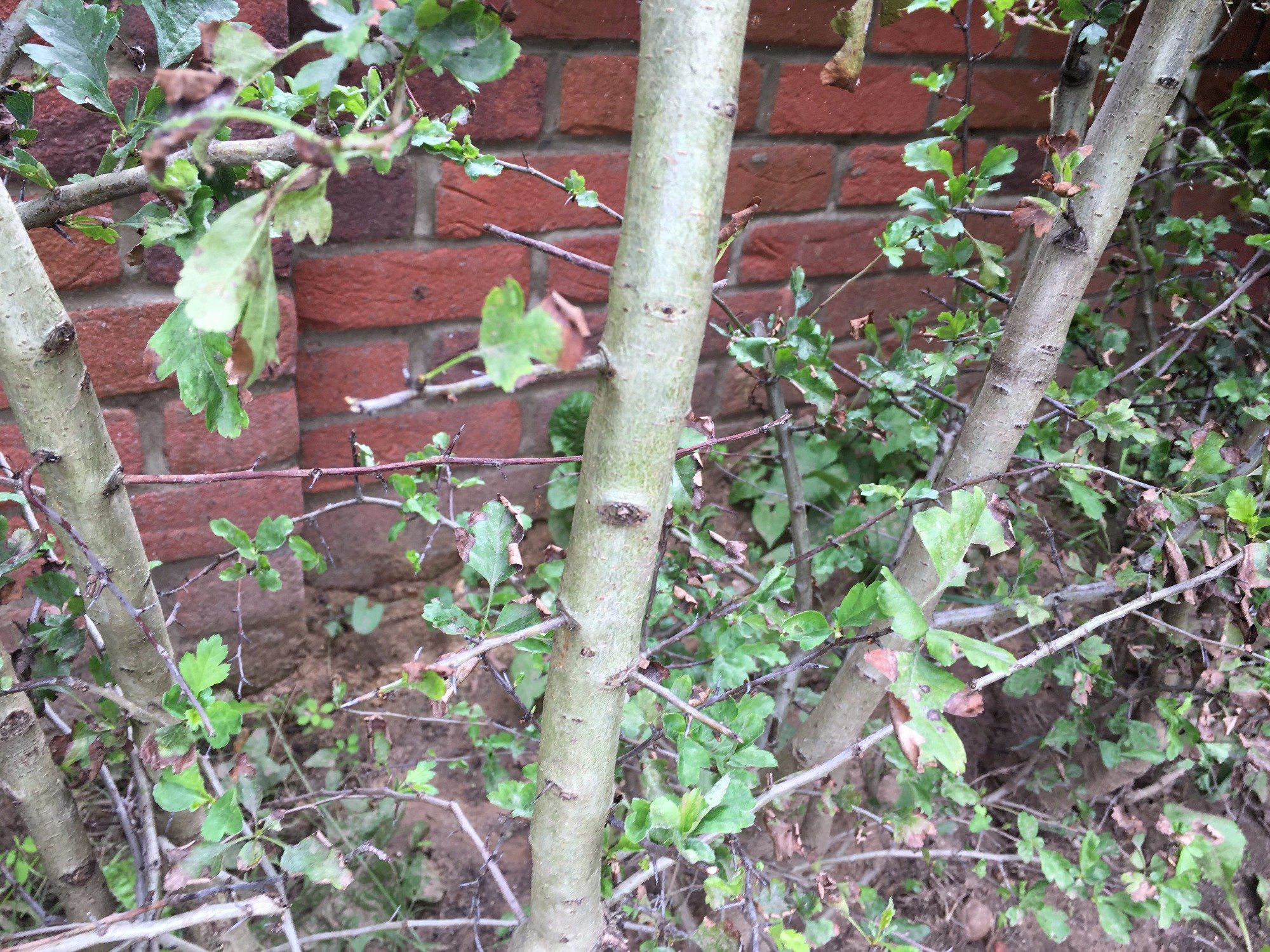Can anyone help me with my Hawthorn hedge problem?
Hey all, bit of a newbie when it comes to all things Gardening so please bare with me! 
5 months ago we bought a 4 lots of pre-grown Hawthorn hedge plants as we were having problems with kids jumping over our fence.
We planted them leaving enough space between them and using root booster stuff.
We noticed after about a week a lot of the leaves were turning brown and dying, we just presumed it was because they were settling in. Then more started dying so we contacted the place we bought them from and they suggested a nitrogen based feed so we've been doing that as the instructions suggest.
A few months have gone by and they still don't seem very healthy at all. New branches are growing out, but the moment a leaf starts to grow on it, it turns thin and starts to turn brown (as you can see in the picture) then dies off.
Does anyone have any suggestions what we can do? We paid a lot of money for these so really don't want them to just wilt away!
Thanks for taking the time to read my post


Posts
Hi mrleelee. I think it could just be a case of settling in. They seem to be quite large plants so the stress of being replanted with lots of leaves, when they should be making strong new roots could be whats happening. Keep well watered and add a mulch. The weather conditions have also not been conducive to good plant growth. I don't think I would despair just yet
I agree with Ladybird and think this is because they still establishing roots and can't support more leaves which is why the new growth is dying off. Large hawthorn take much longer to establish than small ones. They need to be watered at least once a week (and even every day during hot weather) throughout their first year. I think you'll see them pick up next spring and start to grow normally.
Hey Ladybird4, thank you so much for your speedy reply.
That is very positive, I've been reading a few things about Fireblight and was a bit concerned as some of the photos i've seen look similar to our hedge.
Could I ask what a mulch is?
Thanks again for your reply, it's very much appreciated!
Thank you as well BobTheGardener.
They are very large hedges as we had to buy them pre-grown, so hopefully it is just a case of them settling in.
Hi again. A mulch is just a thick 'blanket' of well rotted compost applied to the soil around each plant stem (without being in contact with the stem) each winter or spring. This insulates the roots and adds valuable nutrients to the soil. Earthworms just love to pull it down underground too which helps enrich the soil even further. Well rotted horse manure or spent mushroom compost are also valuable mulches but don't use mushroom compost on acid loving plants as it is quite alkaline.
They are very close to the wall - even in wet weather walls create a rain shadow
" Walls keep off rain causing a mini-rainshadow up to a metre (yard) wide from the base of the wall. In this zone the soil will be particularly dry and plants may fail to thrive unless watered." https://www.rhs.org.uk/advice/profile?PID=689
They are quite large plants with a lot of foliage - foliage transpires moisture - so give them a couple of large buckets full of water at least two or three times a week until autumn, unless you get a real tropical downpour.
Last edited: 16 July 2016 14:26:59
Gardening in Central Norfolk on improved gritty moraine over chalk ... free-draining.
Thanks so much for all your replies. They have all been really helpful.
Here is a bit of a wider picture. The thing that is confusing me a bit is on the one labelled 3, it seems really bushy and green and growing well, yet 1 and 2 seem really thin and frail.
As you can see, you can't really notice the browning leaves until you get really close, so hopefully it is just a case of them settling in combined with a little under watering
They look pretty ok to me mrleelee so as I said before there's no need to despair.
They look fine to me too. Give them lots of water as others have said, a good soaking at least once per week. To encourage them to grow thick, prune them hard once the leaves have dropped and they will thicken up beginning next spring. As they are quite large you will probably need to water them next spring and summer too.
I'd clear a proper border for them though. The grass is very near, which means more competition for moisture and nutrients, and the ground looks very compacted there. If you take another foot or so of the turf away in front of the hedging, and add some compost, that will help, and will give the hedge a better start.
Keep the area weed free, and the grass edge tidy as well.
I live in west central Scotland - not where that photo is...